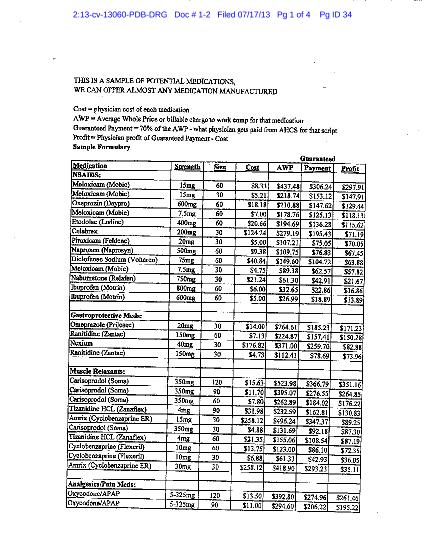A few states – very few – are getting some measure of control over the overuse of opioids in workers’ comp. I’ve been speaking to folks in these states, and will report on those conversations, what is working, what isn’t, and what we can learn.
We’ll start with Texas, where Kim Haugaard of Texas Mutual has been working closely with TM’s Medical Director Nick Tsourmas MD – and pretty much everyone else at TM and in the provider community on this issue for years. Notably, Texas has the advantage of a strong regulatory environment with clinical guidelines and strong UR rules. While this combination makes it somewhat easier to address opioid overuse, the regs are only good if they are fully embraced. That, Texas Mutual has done.
Here’s part of our conversation.
MCM – What was a key factor motivating TM to address opioids and drugs?
Kim – We are meeting with our actuaries constantly, monitoring the trend lines, average paid per claim and other data points. We separate out claims with and without opioids. [From those analyses, we learned] The longer claims were open, the higher the chance there were drugs involved, and drugs were the driving cost factor. Once you address the drugs, you reduce length of disability.
MCM – What are the results of your efforts to date?
Kim – We have had a lot of success addressing opioids and all drug overuse, probably more than any other company. Our drug costs have seen a steep drop since Q1 2010.
Overall opioid usage is down by over 40%. I can tell you that of the 1,249 claims no longer receiving “N Drugs”, 46% of those injured workers are receiving no drugs whatsoever. The other ones have moved away from the N-status drugs to Y-status drugs.
You may remember at AASCIF, Dr. Tsourmas presented the findings on a program that I implemented several years ago. For the top 400 most costly Rx claims, the average Rx cost per claim per year was $14,700. After our program – outreach for doctor-to-doctor, average cost per claim was $3300, average savings of $11,400 per claim.
MCM – What’s the key to your success?
Kim – You have to attack the drug issue from all angles, this is a team effort, involving prescribing doctors, and various carrier stakeholders, including, front-line staff, actuary, medical operations staff, medical director, legal, and the PBM.
MCM – You noted this is a team effort – who else is on your “team”?
Kim – We are working very closely with the Texas Medical Society and Pain Society, we’ve spoken at their conferences and met with physicians and physician leaders individually. Some physicians we had issues with are now collaborating closely to address the opioid issue.
On drug testing, we are working with Millennium Labs on developing a “best practices” program, setting up testing protocols based on patient risk scores.
MCM – How do you focus your efforts?
Kim – In everything we do, we focus on outliers – reward the high performers and analyze and address the low performers.
What does this mean for you?
Yes, you can dramatically impact opioid overuse.
While strong regulations are a big help, a) you have to use them effectively, and b) much of what Texas Mutual has done can be done anywhere – perhaps with a bit less success, but success nonetheless.

